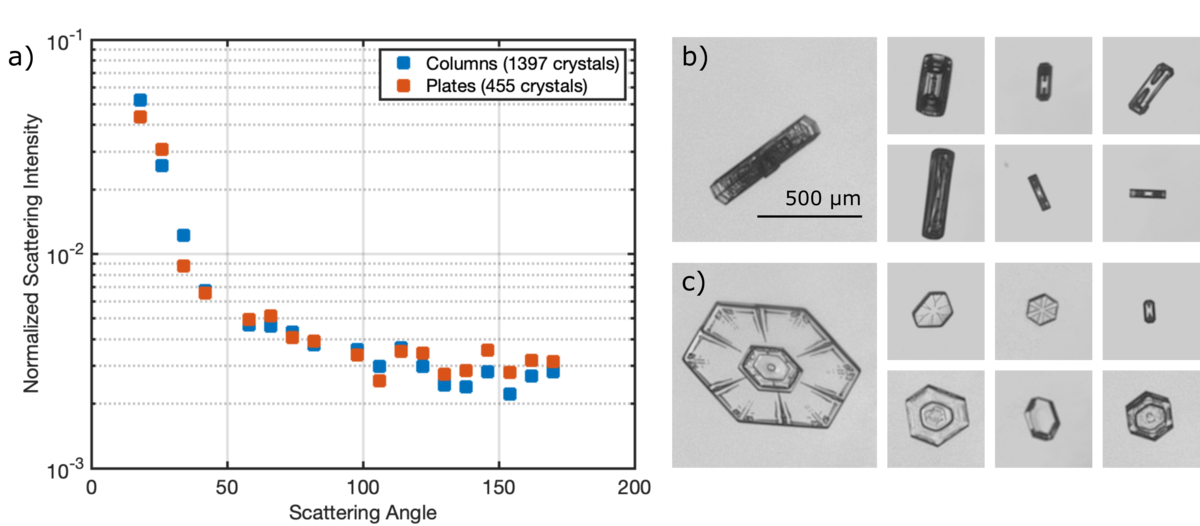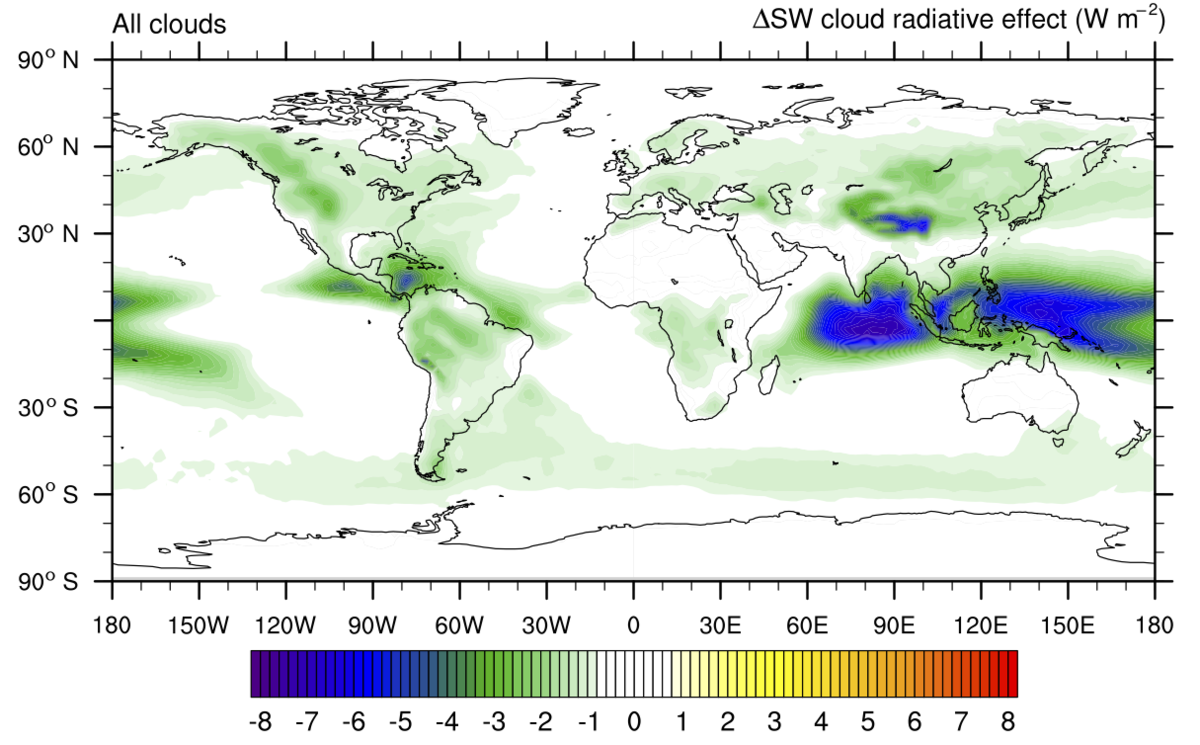Research
3. Radiative Properties of Ice Clouds
There exists still a large uncertainty related to the radiative effect of cirrus clouds. Climate and weather forcast models usually assume simplified ice crystals shapes, whose optical properties do not necessary match those of natural cirrus ice crystals. This can cause significant bias in the model. Our studies have shown that cirrus clouds are actually more reflecting than previously though. This can be explained by the increased side- and backscattering from complex crystals compared to their pristine counterparts. We want to improve the short-wave optical parameterisation of cirrus clouds by introducing new optical ice crystal model that is validated using in-situ measurements.
Read more here:
|
Järvinen, E., Jourdan, O., Neubauer, D., Yao, B., Liu, C., "Additional global climate cooling by clouds due to ice crystal complexity.", Atmos. Chem. Phys., 18, 15767-15781, 2018, doi.org/10.5194/acp-18-15767-2018 |

%20red.png)

